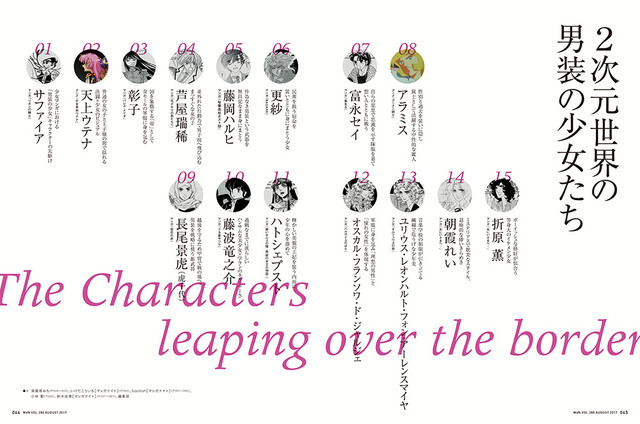 From mid-2015 to late 2016, a strange candy-coloured jewel sparkled brightly in Shueisha’s Gekkan YOU, a monthly josei manga magazine which has a target demographic from youngish female office workers to women in their 50s who all have been reading shoujo manga for a long time, and which usually offers a line-up of mostly romance, comedy and slice of life josei manga by shoujo manga veterans. Yet sometimes it is in the most unexpected places you can find the most unusual, charming little gems, in this case a short series called Kokage-kun wa Majo (subtitled Kokage-kun Bewitched, but more literally translated Kokage-kun is a Witch), published separately in 3 comic volumes.
From mid-2015 to late 2016, a strange candy-coloured jewel sparkled brightly in Shueisha’s Gekkan YOU, a monthly josei manga magazine which has a target demographic from youngish female office workers to women in their 50s who all have been reading shoujo manga for a long time, and which usually offers a line-up of mostly romance, comedy and slice of life josei manga by shoujo manga veterans. Yet sometimes it is in the most unexpected places you can find the most unusual, charming little gems, in this case a short series called Kokage-kun wa Majo (subtitled Kokage-kun Bewitched, but more literally translated Kokage-kun is a Witch), published separately in 3 comic volumes.
 Its young artist, Komori YÅko, is a very recent graduate of Bunsei University of Art and neither a former Betsuma author now graduated to YOU nor a veteran like Hagio Moto, who are all more typical for the latter magazine’s roster. But Komori’s unique art style and inventive story-telling definitely deserve a closer look if you’re interested in exciting new talents. She only has two previous 2-volume series under her belt, one astronomically themed, the other one taking place in a maritime setting, which were also serialized in YOU. In these two works, she has already been able to impress readers with her quiet but entrancing stories and her stunning yet clean art relying heavily on natural motifs. Here, in Kokage-kun wa Majo it’s the plants-growing-out-of-cute-boys-and-girls, slightly pagan aesthetics so popular among professional and amateur artists right now which are combined with pastel secondary colors, playful gothic lolita accessories and fairy tale elements in a suburban and later on more fantastic setting providing a backdrop for a surprisingly dark love story.
Its young artist, Komori YÅko, is a very recent graduate of Bunsei University of Art and neither a former Betsuma author now graduated to YOU nor a veteran like Hagio Moto, who are all more typical for the latter magazine’s roster. But Komori’s unique art style and inventive story-telling definitely deserve a closer look if you’re interested in exciting new talents. She only has two previous 2-volume series under her belt, one astronomically themed, the other one taking place in a maritime setting, which were also serialized in YOU. In these two works, she has already been able to impress readers with her quiet but entrancing stories and her stunning yet clean art relying heavily on natural motifs. Here, in Kokage-kun wa Majo it’s the plants-growing-out-of-cute-boys-and-girls, slightly pagan aesthetics so popular among professional and amateur artists right now which are combined with pastel secondary colors, playful gothic lolita accessories and fairy tale elements in a suburban and later on more fantastic setting providing a backdrop for a surprisingly dark love story.
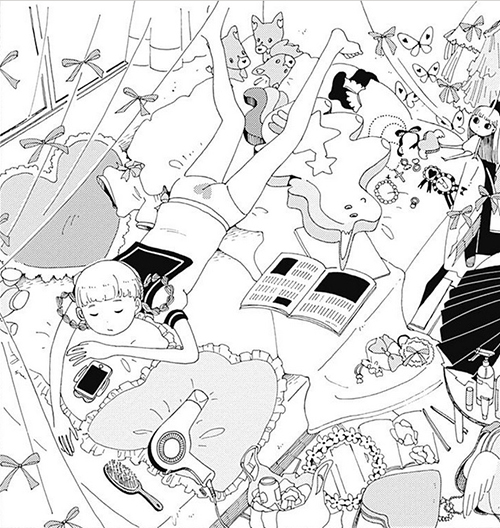 Yumeko, our female protagonist, is a cute but lazy and self-indulgent girl who likes rolling around on the floor of her room in just a pair of panties and her school uniform top. Together with her mother, she lives in a decrepit community apartment building, a fact she’s been trying to hide from the girls in her class – and often from herself as she dreams herself away, imagining herself to be a princess swimming in cute clothes, candy and cakes. (We’re back to an old danchi as the childhood home of a shoujo manga heroine here; see Yamakawa Aiji’s previously reviewed Yajirobee for another example.) But that creepy old apartment building appears to have been hiding one secret from her too, as Yumeko finds out one day: there’s a boy living deep in the mysterious forest located on the roof of the building. The two argue a lot from their first meeting on, but there is something special about him that draws Yumeko back to his green oasis on top of the house. When Yumeko finds herself in a dangerous situation, it turns out that Kokage-kun, while biologically a boy, possesses helpful magical powers linked to nature which he inherited from his mother, making him a male witch!
Yumeko, our female protagonist, is a cute but lazy and self-indulgent girl who likes rolling around on the floor of her room in just a pair of panties and her school uniform top. Together with her mother, she lives in a decrepit community apartment building, a fact she’s been trying to hide from the girls in her class – and often from herself as she dreams herself away, imagining herself to be a princess swimming in cute clothes, candy and cakes. (We’re back to an old danchi as the childhood home of a shoujo manga heroine here; see Yamakawa Aiji’s previously reviewed Yajirobee for another example.) But that creepy old apartment building appears to have been hiding one secret from her too, as Yumeko finds out one day: there’s a boy living deep in the mysterious forest located on the roof of the building. The two argue a lot from their first meeting on, but there is something special about him that draws Yumeko back to his green oasis on top of the house. When Yumeko finds herself in a dangerous situation, it turns out that Kokage-kun, while biologically a boy, possesses helpful magical powers linked to nature which he inherited from his mother, making him a male witch!

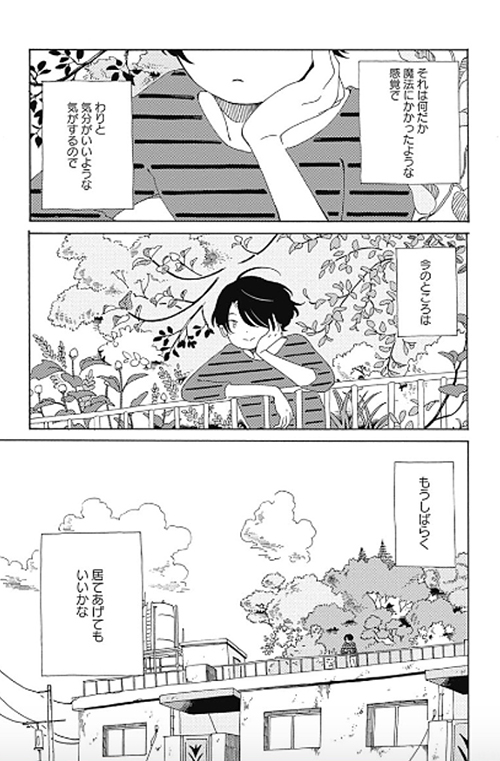
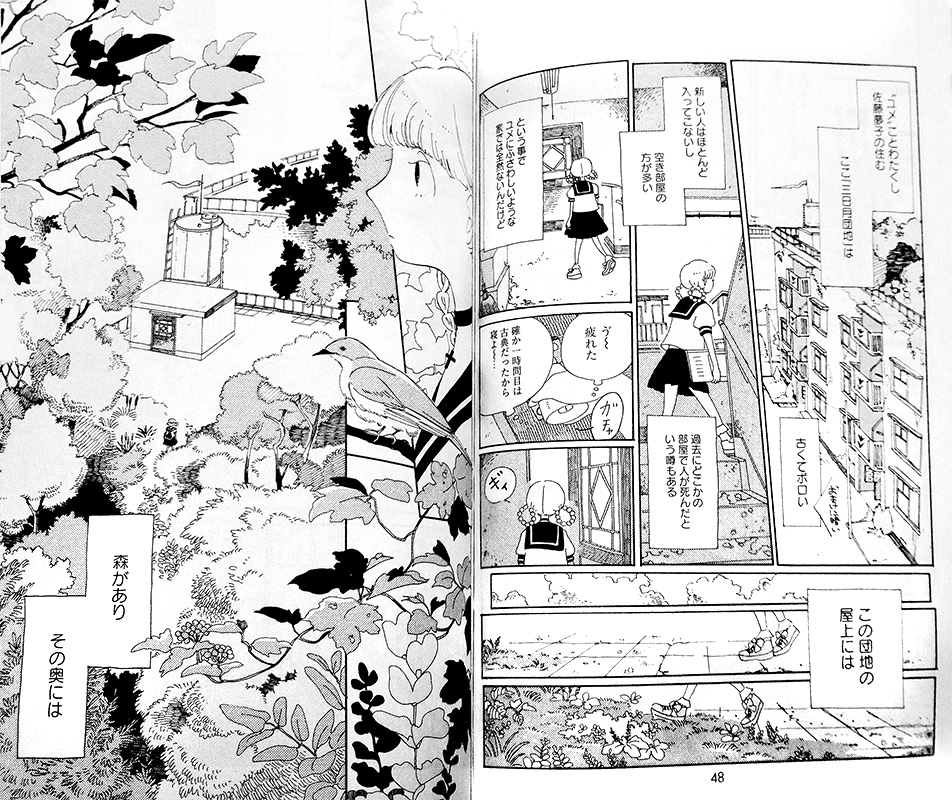
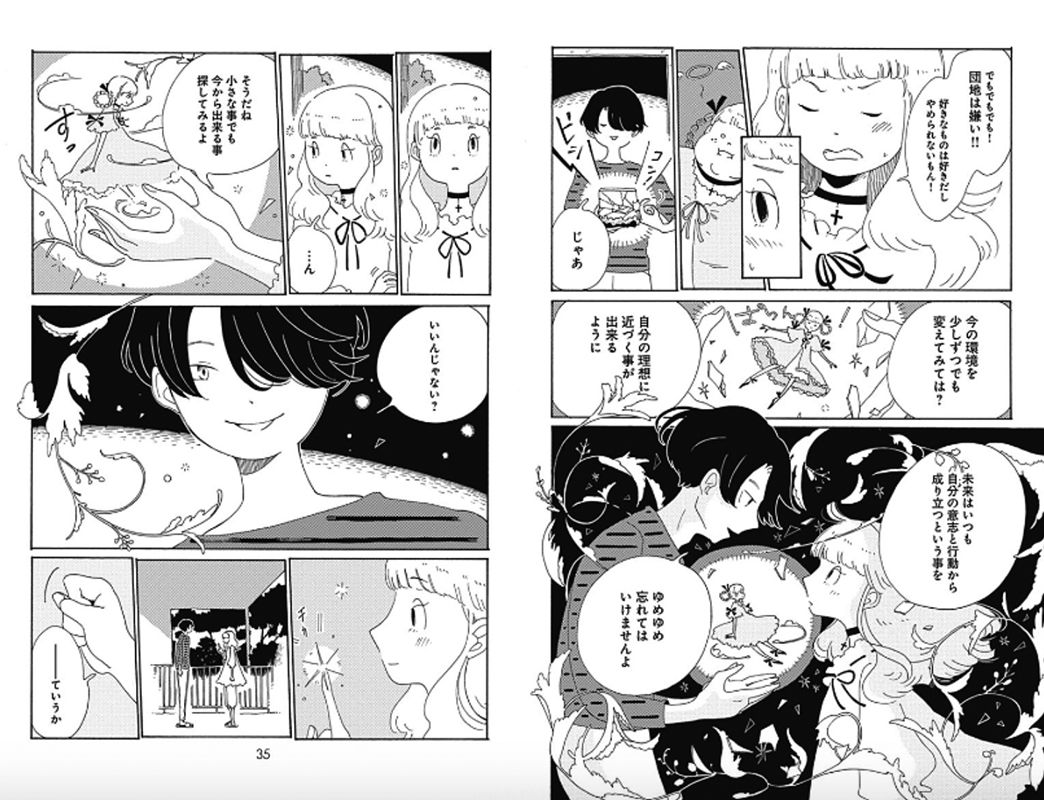
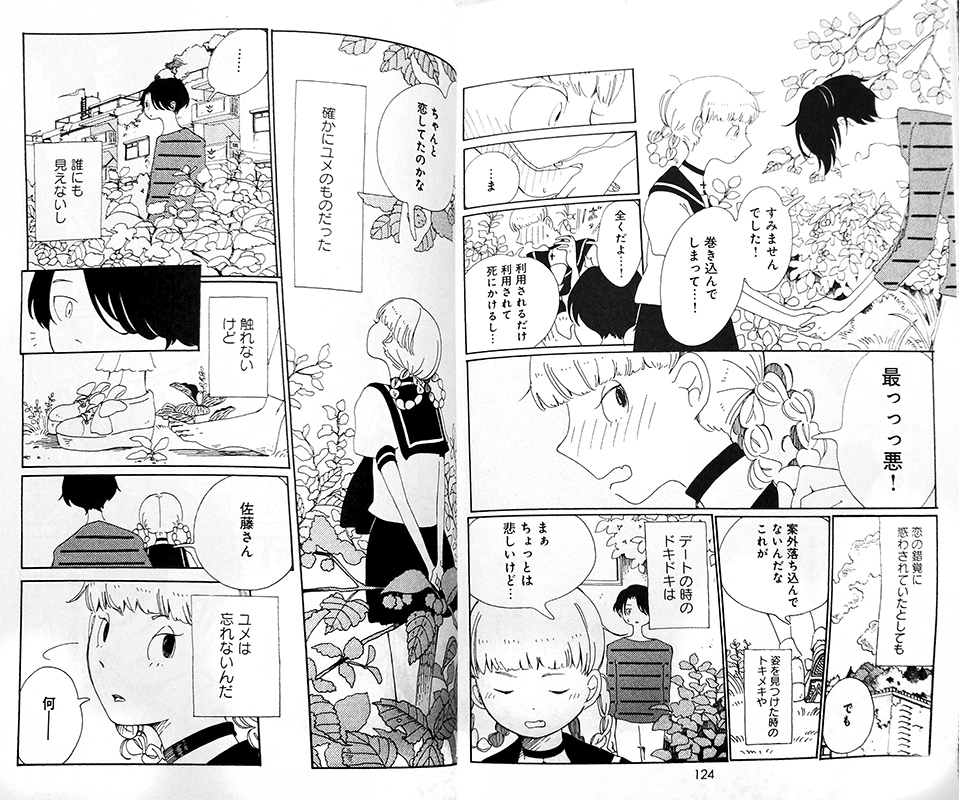
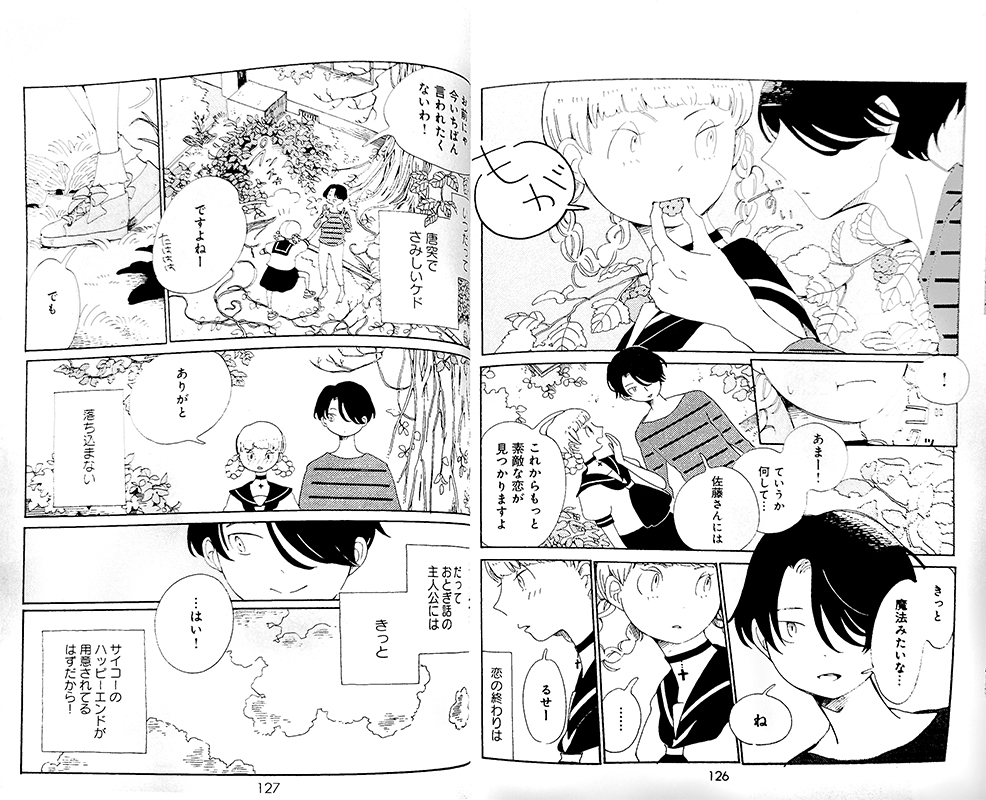
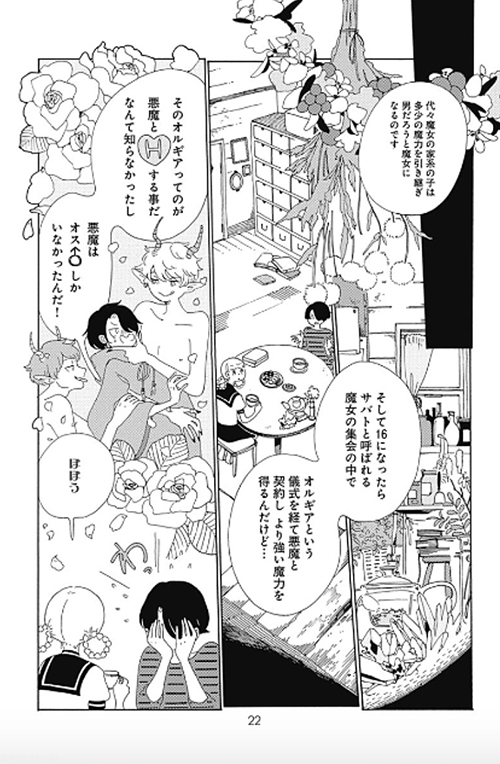 Kokage-kun was supposed to take part in an “orgia†with a demon (akuma) to gain his full magical powers. He didn’t want to, though – for hidden reasons closely connected to Yumeko. The demon, however, never accepted Kokage-kun’s rejection and can’t let go of his desire for the witch boy and his right to an orgy with him. (And yes, that orgy is exactly what it sounds like ;) His plan is to get closer to Kokage-kun by using Yumeko who is flattered by the sudden attention of the demon in the disguise of a rather good-looking schoolboy. Of course, Yumeko is doomed to get hurt once she finds out the demon’s true intentions and is shocked when she hears about that orgia business.
Kokage-kun was supposed to take part in an “orgia†with a demon (akuma) to gain his full magical powers. He didn’t want to, though – for hidden reasons closely connected to Yumeko. The demon, however, never accepted Kokage-kun’s rejection and can’t let go of his desire for the witch boy and his right to an orgy with him. (And yes, that orgy is exactly what it sounds like ;) His plan is to get closer to Kokage-kun by using Yumeko who is flattered by the sudden attention of the demon in the disguise of a rather good-looking schoolboy. Of course, Yumeko is doomed to get hurt once she finds out the demon’s true intentions and is shocked when she hears about that orgia business.
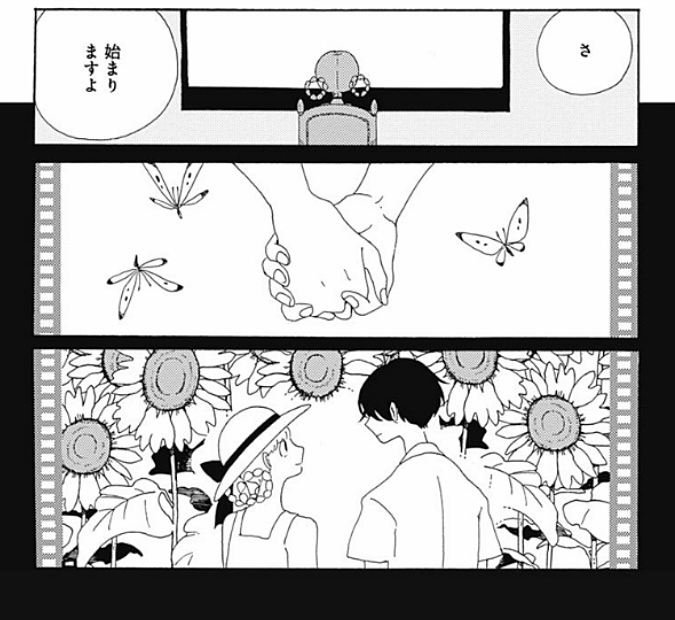 Things get even more complicated when Yumeko realizes that her own feelings for the witch boy are slowly changing when her best friend Nanao falls in love with him. But there is a mysterious strong bond between Yumeko and Kokage: they seem to have a shared past Yumeko doesn’t remember, the proof being a photograph she finds of her and him smiling happily in a field of sunflowers… This is just the beginning of Yumeko’s and Kokage-kun’s dangerous journey to the bottom of darkness which is lightened up by hope, friendship and wonders, more witches, demons and a puppet master, a journey to recover Yumeko’s lost memories of a forgotten love – and to overcome death.
Things get even more complicated when Yumeko realizes that her own feelings for the witch boy are slowly changing when her best friend Nanao falls in love with him. But there is a mysterious strong bond between Yumeko and Kokage: they seem to have a shared past Yumeko doesn’t remember, the proof being a photograph she finds of her and him smiling happily in a field of sunflowers… This is just the beginning of Yumeko’s and Kokage-kun’s dangerous journey to the bottom of darkness which is lightened up by hope, friendship and wonders, more witches, demons and a puppet master, a journey to recover Yumeko’s lost memories of a forgotten love – and to overcome death.
 Like mentioned in the beginning, Komori YÅko’s artwork is absolutely delightful! From the beautiful color illustrations for the book covers, sweetly pastel-hued like Yumeko’s beloved candy, to the retro but sparkle-free character designs, which convey emotions expertly through lively facial expressions, to the atmospheric settings – there’s just so much that pleases the eye without ever being overwhelming. The page designs throughout are mostly clean, with the action often put into tidy panels, but also feature pretty details and natural ornaments, like insects, flowers, or even leaves growing out of bodies. But the pages never appear overwrought or overloaded, just as the story is not convoluted but – despite its growing complexity – easy to follow throughout the three volumes. And what is important to stress is that the art of a wildly growing nature is not just a visual gimmick here, as the life force of nature is crucial to the bitter but ultimately sweet story. Komori is also a master of creating memorable scenes just by putting her whimsical characters, fully fleshed out with their own weaknesses and quirky habits, into charming sceneries and settings: the run-down yet retro-cute community housing complex, a haunted forest, a day at the beach that envelopes the reader in its atmosphere so successfully you’ll find yourself able to smell the salty air and hear the cries of the seagulls!
Like mentioned in the beginning, Komori YÅko’s artwork is absolutely delightful! From the beautiful color illustrations for the book covers, sweetly pastel-hued like Yumeko’s beloved candy, to the retro but sparkle-free character designs, which convey emotions expertly through lively facial expressions, to the atmospheric settings – there’s just so much that pleases the eye without ever being overwhelming. The page designs throughout are mostly clean, with the action often put into tidy panels, but also feature pretty details and natural ornaments, like insects, flowers, or even leaves growing out of bodies. But the pages never appear overwrought or overloaded, just as the story is not convoluted but – despite its growing complexity – easy to follow throughout the three volumes. And what is important to stress is that the art of a wildly growing nature is not just a visual gimmick here, as the life force of nature is crucial to the bitter but ultimately sweet story. Komori is also a master of creating memorable scenes just by putting her whimsical characters, fully fleshed out with their own weaknesses and quirky habits, into charming sceneries and settings: the run-down yet retro-cute community housing complex, a haunted forest, a day at the beach that envelopes the reader in its atmosphere so successfully you’ll find yourself able to smell the salty air and hear the cries of the seagulls!
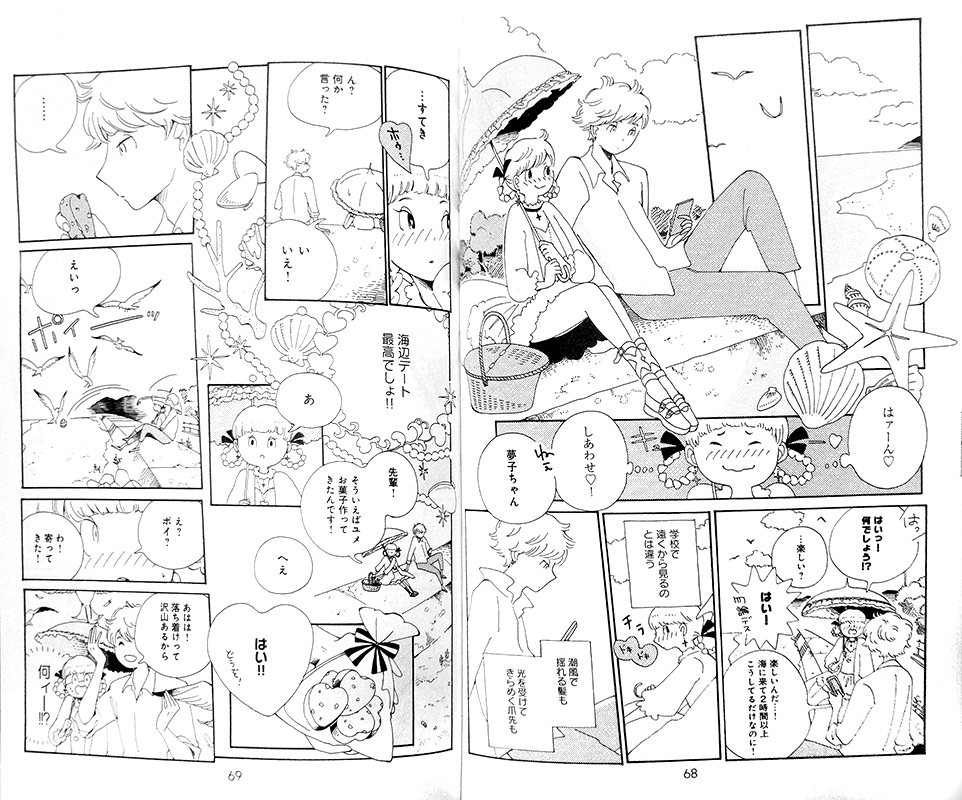
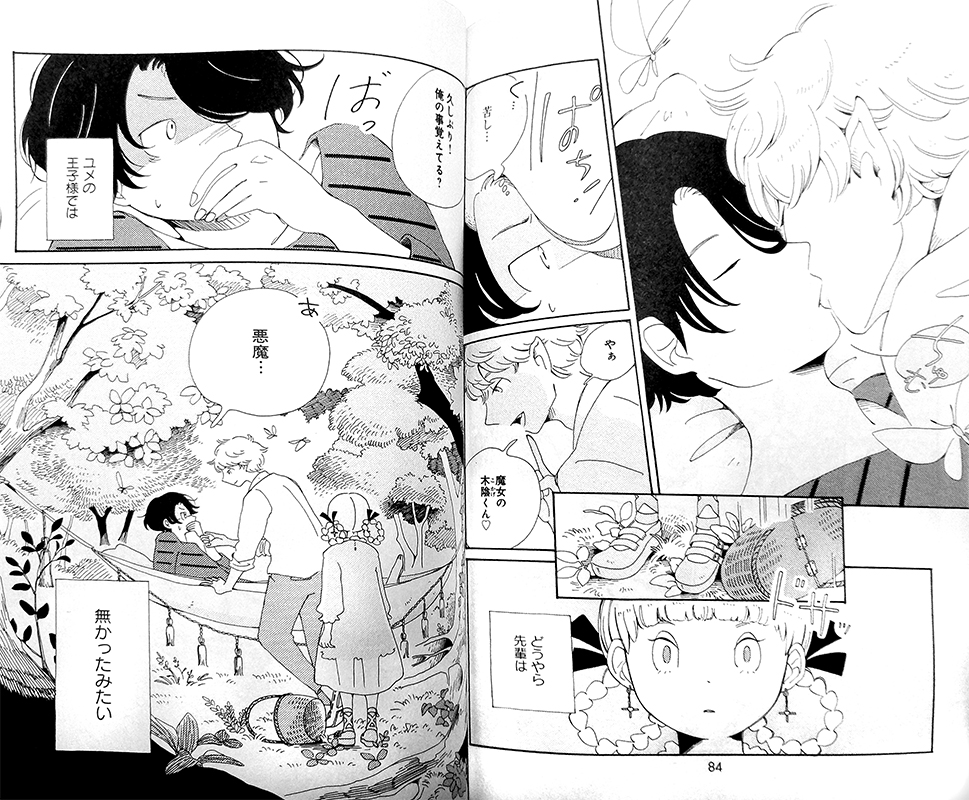
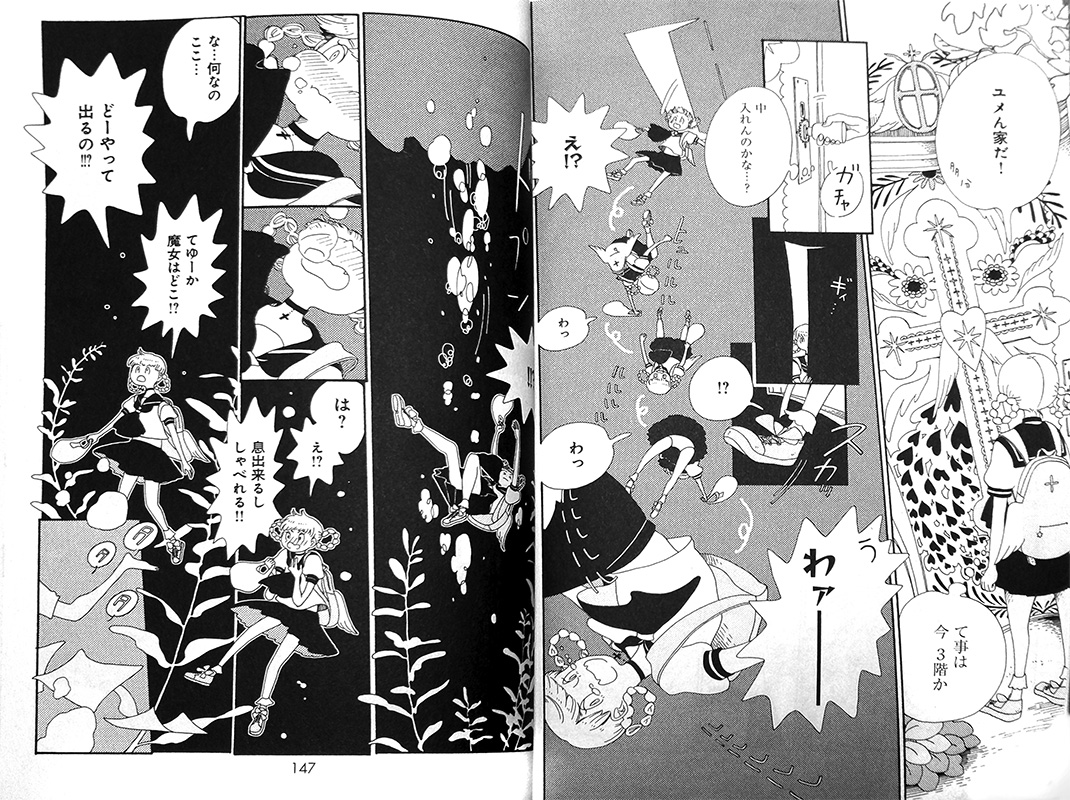
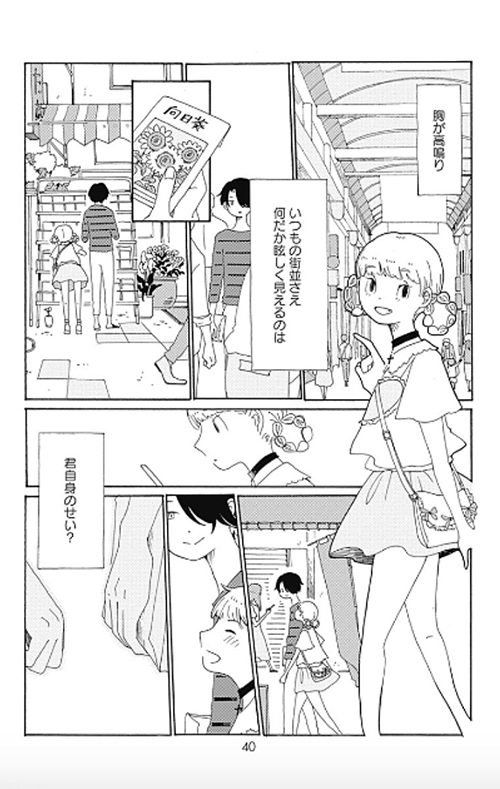 Komori YÅko is not just a wizard of ink and colours: her series is brimming with small inventive ideas which are delivered both through the art and the story itself. Her talent for plotting and story-telling is just as outstanding as her art, as she presents us with a narrative full of twists and turns. Our starting point is witnessing the antics of our lazy heroine, her hilarious lack of self-discipline and her little quarrels with the witch boy, the tone being light and fun with a slight hint of melancholia. As the story unravels it turns surprisingly complex and deeply emotional, combining elements of comedy, fantasy, romance, adventure and even boys’ love. It sometimes even ventures into the surreal which again provides the reader with some unusual art to go along with it.
Komori YÅko is not just a wizard of ink and colours: her series is brimming with small inventive ideas which are delivered both through the art and the story itself. Her talent for plotting and story-telling is just as outstanding as her art, as she presents us with a narrative full of twists and turns. Our starting point is witnessing the antics of our lazy heroine, her hilarious lack of self-discipline and her little quarrels with the witch boy, the tone being light and fun with a slight hint of melancholia. As the story unravels it turns surprisingly complex and deeply emotional, combining elements of comedy, fantasy, romance, adventure and even boys’ love. It sometimes even ventures into the surreal which again provides the reader with some unusual art to go along with it.
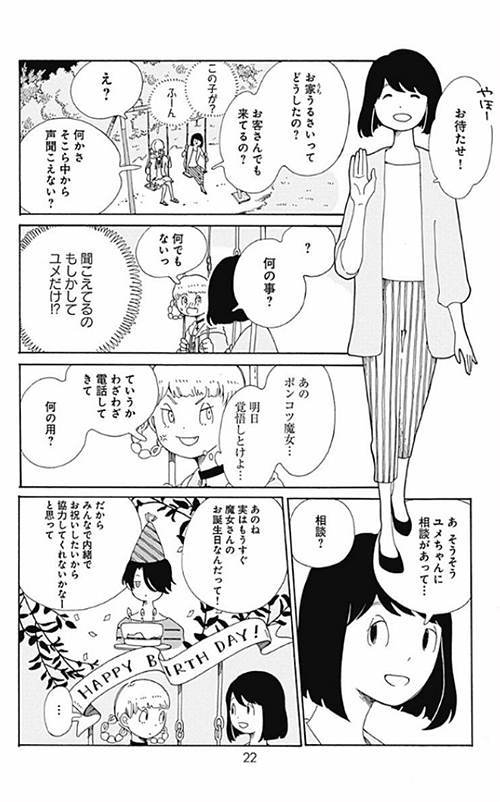 The cast is growing too as Yumeko and Kokage later on are joined by more and more magical companions. And it’s the deepening bonds with Yumeko’s friend from school, Nanao, and another witch girl called Moe that are really nice to watch, as this manga is not just a fantasy romance manga but also depicts friendships among girls in a realistic, multi-layered way. However, the heart of the manga remains Yumeko’s and Kokage-kun’s dangerous journey, as the question of whether the two will be able to save their future together is what will keep readers devouring the pages, desperately hoping for a happy end…
The cast is growing too as Yumeko and Kokage later on are joined by more and more magical companions. And it’s the deepening bonds with Yumeko’s friend from school, Nanao, and another witch girl called Moe that are really nice to watch, as this manga is not just a fantasy romance manga but also depicts friendships among girls in a realistic, multi-layered way. However, the heart of the manga remains Yumeko’s and Kokage-kun’s dangerous journey, as the question of whether the two will be able to save their future together is what will keep readers devouring the pages, desperately hoping for a happy end…
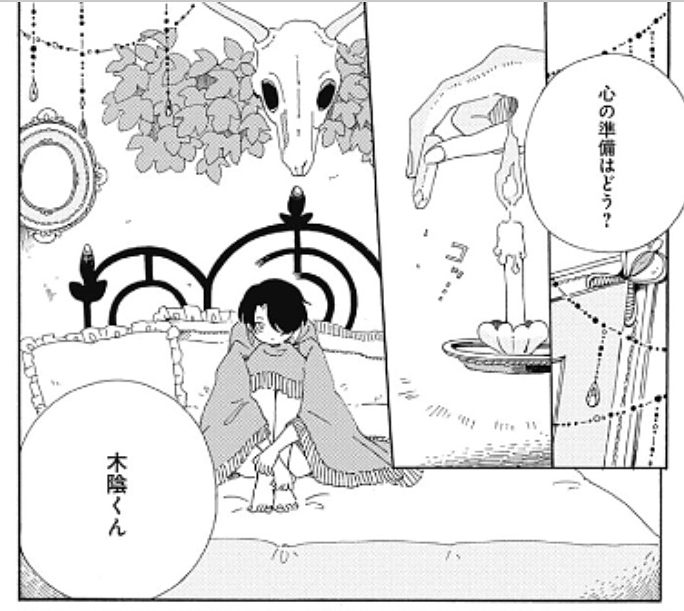 It’s been a while since Kokage-kun wa Majo ended its run and there has been no word on a new work by Komori YÅko, neither short nor long. But now that the artist has finished her art school education, we have to keep our fingers crossed she’ll be able to continue her career as a manga artist and find a lot of support in the future as both her quirky art and story-telling abilities truly stand out in the often rather homogenous sea of mainstream shoujo/josei manga.
It’s been a while since Kokage-kun wa Majo ended its run and there has been no word on a new work by Komori YÅko, neither short nor long. But now that the artist has finished her art school education, we have to keep our fingers crossed she’ll be able to continue her career as a manga artist and find a lot of support in the future as both her quirky art and story-telling abilities truly stand out in the often rather homogenous sea of mainstream shoujo/josei manga.
Title: Kokage-kun wa Majo – Kokage-kun Bewitched (木陰ãã‚“ã¯é”女。)
Author: Komori YÅko (å°æ£®ç¾Šä»”)
Volumes: 3 (2016; completed)
Magazine: Gekkan YOU
Label: Margaret Comics YOU
Publisher: Shueisha
Additional information: Have a look at the first pages of volumes 1, 2 and 3 on the publisher’s site.

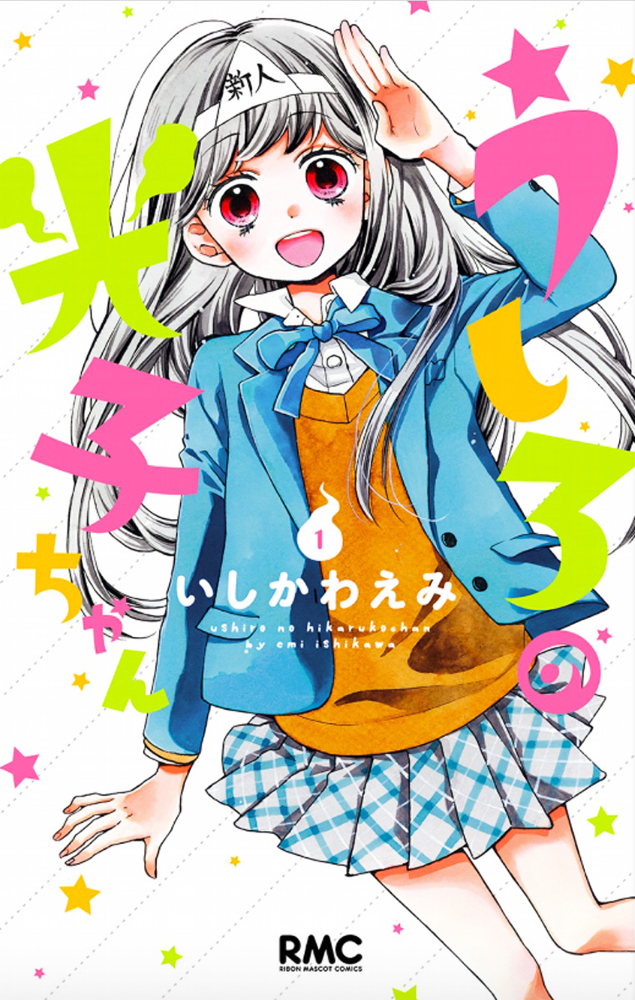 In the past few years, the big three manga magazines for elementary school girls have been spicing up their usual mix of romantic comedies, school dramas, idol and magical girl manga with a spine-tingling element of horror. Ribon‘s most successful title of this wave is Ishikawa Emi’s ZekkyÅ GakkyÅ« (Screaming Lessons, alternatively Scary Lessons for its French and German translations by Tokyo Pop) which was published as 20 volumes from 2009 to 2015. This collection of surprisingly shocking short stories – considering its young target readership – was turned into a live-action movie in 2013, received the Shogakukan Manga Award in the childrens’ manga sub-category in 2014 and has recently been revived for a sequel called ZekkyÅ GakkyÅ« Tensei (Rebirth), with 6 volumes published so far.
In the past few years, the big three manga magazines for elementary school girls have been spicing up their usual mix of romantic comedies, school dramas, idol and magical girl manga with a spine-tingling element of horror. Ribon‘s most successful title of this wave is Ishikawa Emi’s ZekkyÅ GakkyÅ« (Screaming Lessons, alternatively Scary Lessons for its French and German translations by Tokyo Pop) which was published as 20 volumes from 2009 to 2015. This collection of surprisingly shocking short stories – considering its young target readership – was turned into a live-action movie in 2013, received the Shogakukan Manga Award in the childrens’ manga sub-category in 2014 and has recently been revived for a sequel called ZekkyÅ GakkyÅ« Tensei (Rebirth), with 6 volumes published so far.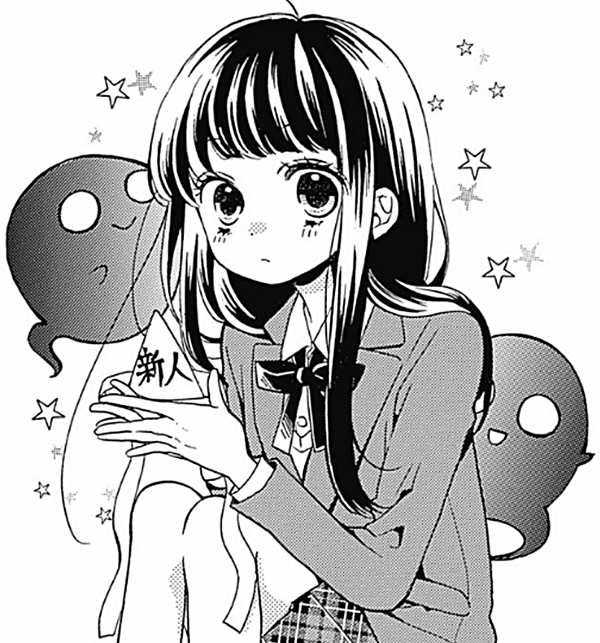 Right between the original series and its sequel, Ishikawa worked on a shorter, 2-volume series titled Ushiro no Hikaruko-chan (lit. Hikaruko-chan Behind You) which gives off a distinct Japanese horror flavor just like Ishikawa’s longer hit title but relies much less on shockingly scary scenes and replaces them with a bittersweet portray of a ghost girl who’s trying to reach back out into the world of the living.
Right between the original series and its sequel, Ishikawa worked on a shorter, 2-volume series titled Ushiro no Hikaruko-chan (lit. Hikaruko-chan Behind You) which gives off a distinct Japanese horror flavor just like Ishikawa’s longer hit title but relies much less on shockingly scary scenes and replaces them with a bittersweet portray of a ghost girl who’s trying to reach back out into the world of the living. 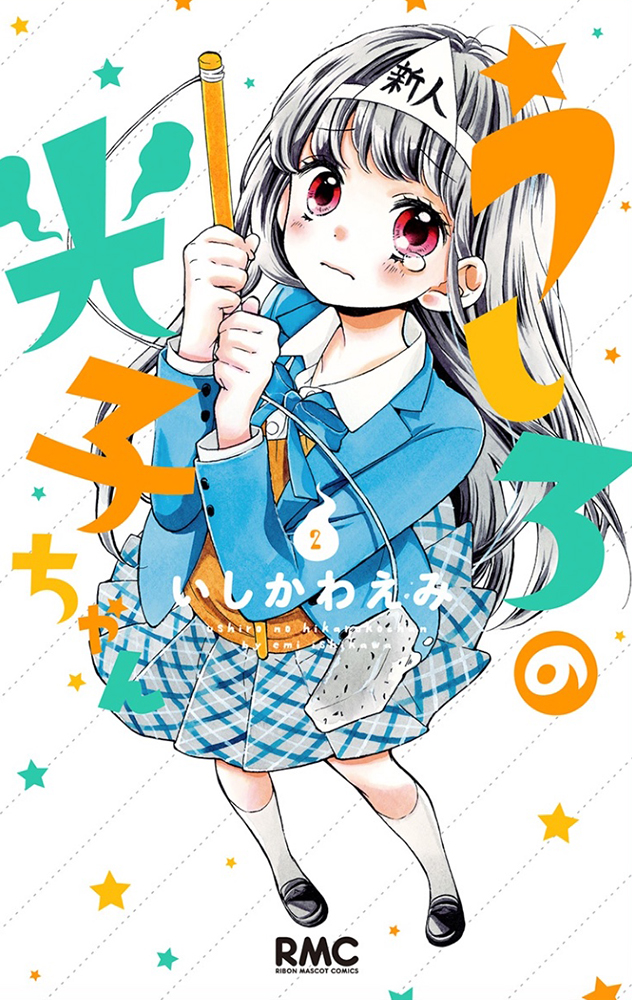 After an accident that should have been fatal at the young age of 14, timid Asahana Hikaruko finds herself unable to leave our world completely behind her. Her lingering attachment to her old life and Haruki, the boy she’s had a crush on for so many years but for whom she was unable to openly show her support, leads her into an arrangement with a handsome instructor of the office for vengeful spirits. From now on, if she doesn’t want her spirit to disappear completely, Hikaruko has to prove herself as an onryÅ, a vengeful spirit, by scaring her designated ‘targets’, making them scream or cry with fear. But instead of being all that frightening she’s much more interested in helping others, for example Hana, an elementary school girl who is bullied at school and almost driven into suicide before Hikaruko gives her the strength – a little push in the back – to confront those torturing her.
After an accident that should have been fatal at the young age of 14, timid Asahana Hikaruko finds herself unable to leave our world completely behind her. Her lingering attachment to her old life and Haruki, the boy she’s had a crush on for so many years but for whom she was unable to openly show her support, leads her into an arrangement with a handsome instructor of the office for vengeful spirits. From now on, if she doesn’t want her spirit to disappear completely, Hikaruko has to prove herself as an onryÅ, a vengeful spirit, by scaring her designated ‘targets’, making them scream or cry with fear. But instead of being all that frightening she’s much more interested in helping others, for example Hana, an elementary school girl who is bullied at school and almost driven into suicide before Hikaruko gives her the strength – a little push in the back – to confront those torturing her.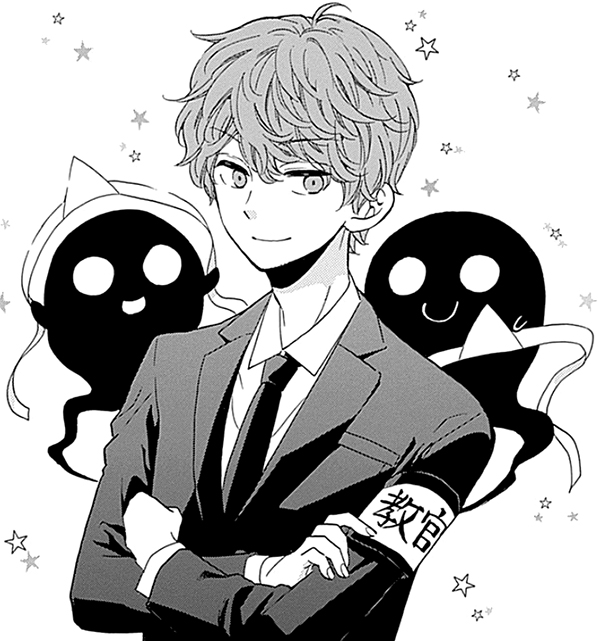 Thus, Hikaruko’s boss is starting to run into trouble because his novice isn’t able to prove herself to be much of a success by the standards of the other vengeful spirits. Hikaruko-chan however carves out her own identity as a supporter to those in need, something she herself wasn’t capable of doing during her lifetime. Sooner or later this will inevitably lead to Hikaruko and Haruki meeting again, but in a different way than Hikaruko imagined it, and Haruki will have to decide between – literally – the world of the living and the dead.
Thus, Hikaruko’s boss is starting to run into trouble because his novice isn’t able to prove herself to be much of a success by the standards of the other vengeful spirits. Hikaruko-chan however carves out her own identity as a supporter to those in need, something she herself wasn’t capable of doing during her lifetime. Sooner or later this will inevitably lead to Hikaruko and Haruki meeting again, but in a different way than Hikaruko imagined it, and Haruki will have to decide between – literally – the world of the living and the dead.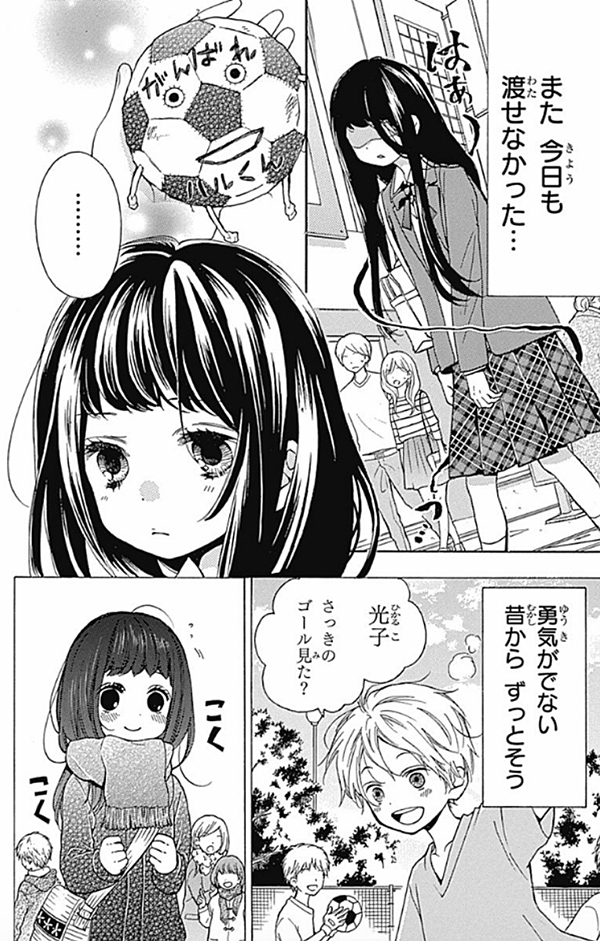
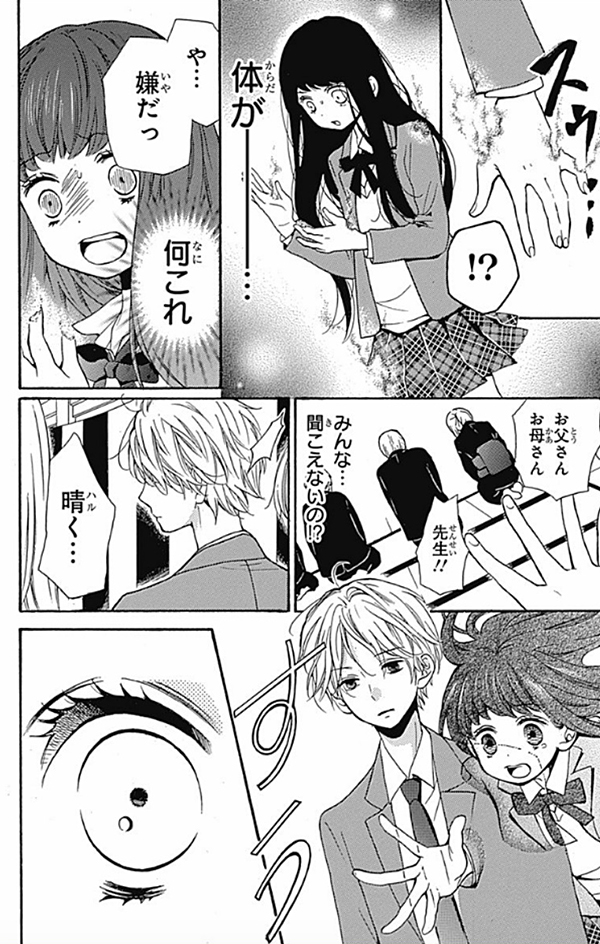
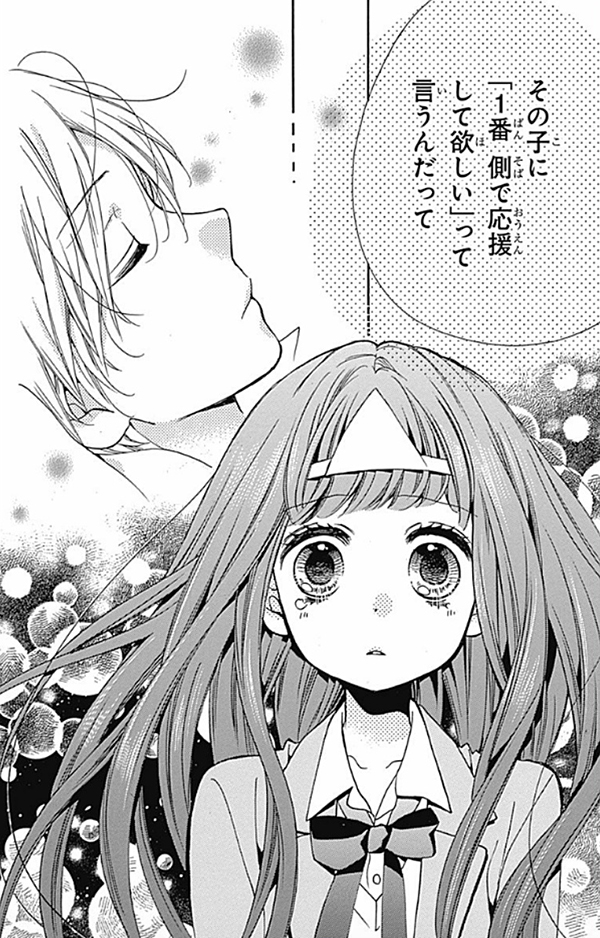
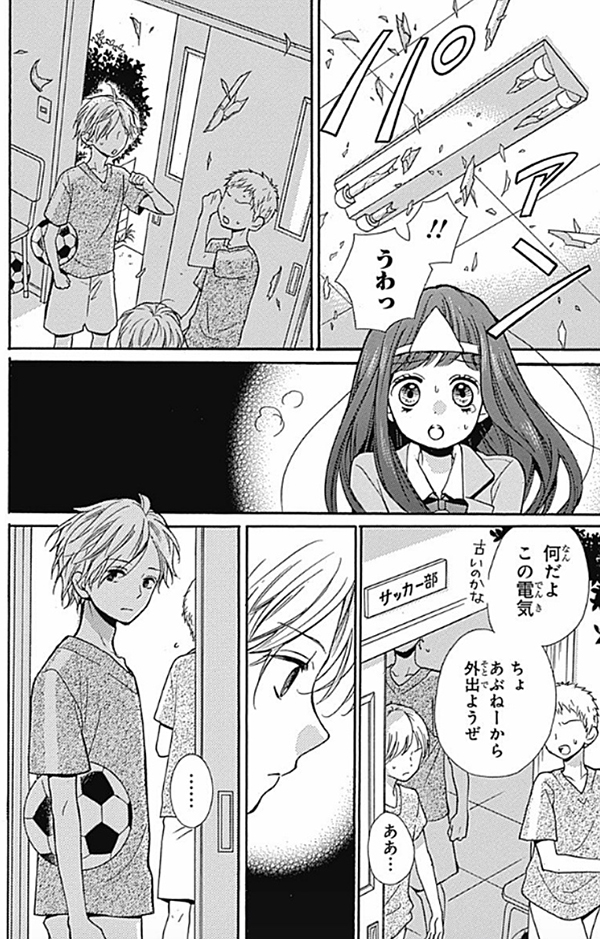
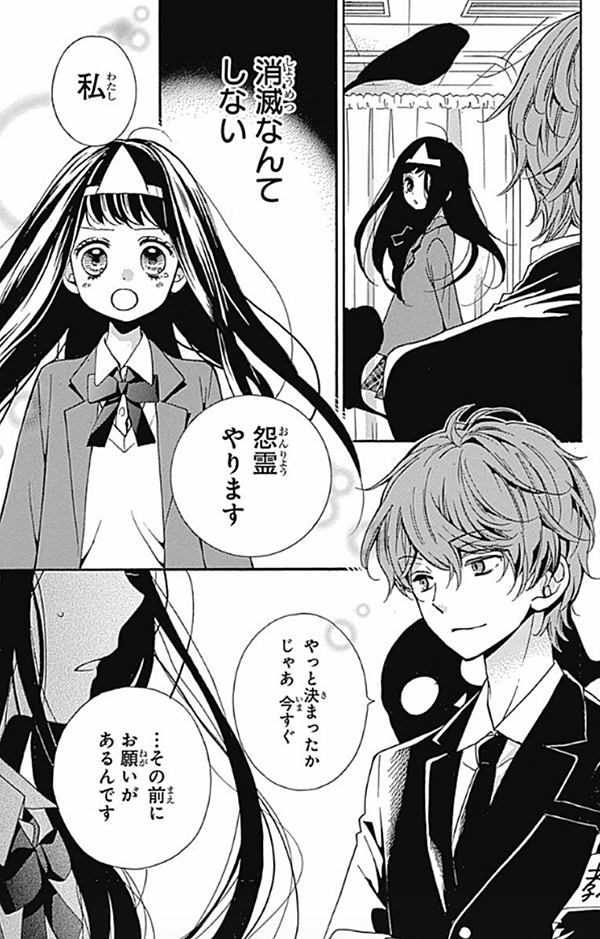 Both the episodes told throughout the series and the overarching plot are engaging and touching as Ishikawa has managed to create a likeable protagonist facing a task she thinks she’s completely unfit to fulfill and an interesting and diverse cast, like the handsome older ghost instructors or eccentric vengeful spirits. Each side character leaves an impact, influencing the main story around Hikaruko and her crush Haruki, propelling it forward with Hikaruko’s emotional evolution as a ghost, the dead girl watching over everyone protectively from behind.
Both the episodes told throughout the series and the overarching plot are engaging and touching as Ishikawa has managed to create a likeable protagonist facing a task she thinks she’s completely unfit to fulfill and an interesting and diverse cast, like the handsome older ghost instructors or eccentric vengeful spirits. Each side character leaves an impact, influencing the main story around Hikaruko and her crush Haruki, propelling it forward with Hikaruko’s emotional evolution as a ghost, the dead girl watching over everyone protectively from behind.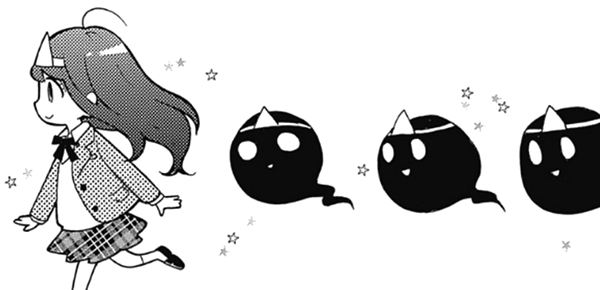 With its cute character design and an intriguing ghost story that’s never too complex, there remains no doubt that this series is primarily targeted towards a very young readership. But its well-balanced mélange of the spooky, the funny and the melancholy should speak to older shÅjo manga readers as well. Whereas there are some pretty heavy shocking moments in Ishikawa’s long-running hit series ZekkyÅ GakkyÅ« and its Tensei sequel, Ushiro no Hikaruko-chan only as a very mild horror taste making it perfect for people who usually don’t read horror manga and also need a bit of psychological depth and development in their stories. With these two volumes you’re in for a nice treat for the Halloween season without a second of boredom. And despite the heavy topic of death looming in the background and its urgent message to support the people you like while you can, there is a lot of warmth and humour here which makes reading this series all the more satisfying!
With its cute character design and an intriguing ghost story that’s never too complex, there remains no doubt that this series is primarily targeted towards a very young readership. But its well-balanced mélange of the spooky, the funny and the melancholy should speak to older shÅjo manga readers as well. Whereas there are some pretty heavy shocking moments in Ishikawa’s long-running hit series ZekkyÅ GakkyÅ« and its Tensei sequel, Ushiro no Hikaruko-chan only as a very mild horror taste making it perfect for people who usually don’t read horror manga and also need a bit of psychological depth and development in their stories. With these two volumes you’re in for a nice treat for the Halloween season without a second of boredom. And despite the heavy topic of death looming in the background and its urgent message to support the people you like while you can, there is a lot of warmth and humour here which makes reading this series all the more satisfying! Japanese design & graphic magazine MdN is running a special feature on girls and women disguising themselves as or dressing as boys/men in their upcoming August 2017 issue out July 6th. Under the headline of “The longing for women in mens’ clothes – the design of characters leaping over the boarder†they try to view the phenomenon from a variety of angles to try and answer the question why so many women feel attracted to the mysteriousness and cool outfits of cross-dressing women. The cover features Avu-chan, the singer from the Kobe-based rock band
Japanese design & graphic magazine MdN is running a special feature on girls and women disguising themselves as or dressing as boys/men in their upcoming August 2017 issue out July 6th. Under the headline of “The longing for women in mens’ clothes – the design of characters leaping over the boarder†they try to view the phenomenon from a variety of angles to try and answer the question why so many women feel attracted to the mysteriousness and cool outfits of cross-dressing women. The cover features Avu-chan, the singer from the Kobe-based rock band 